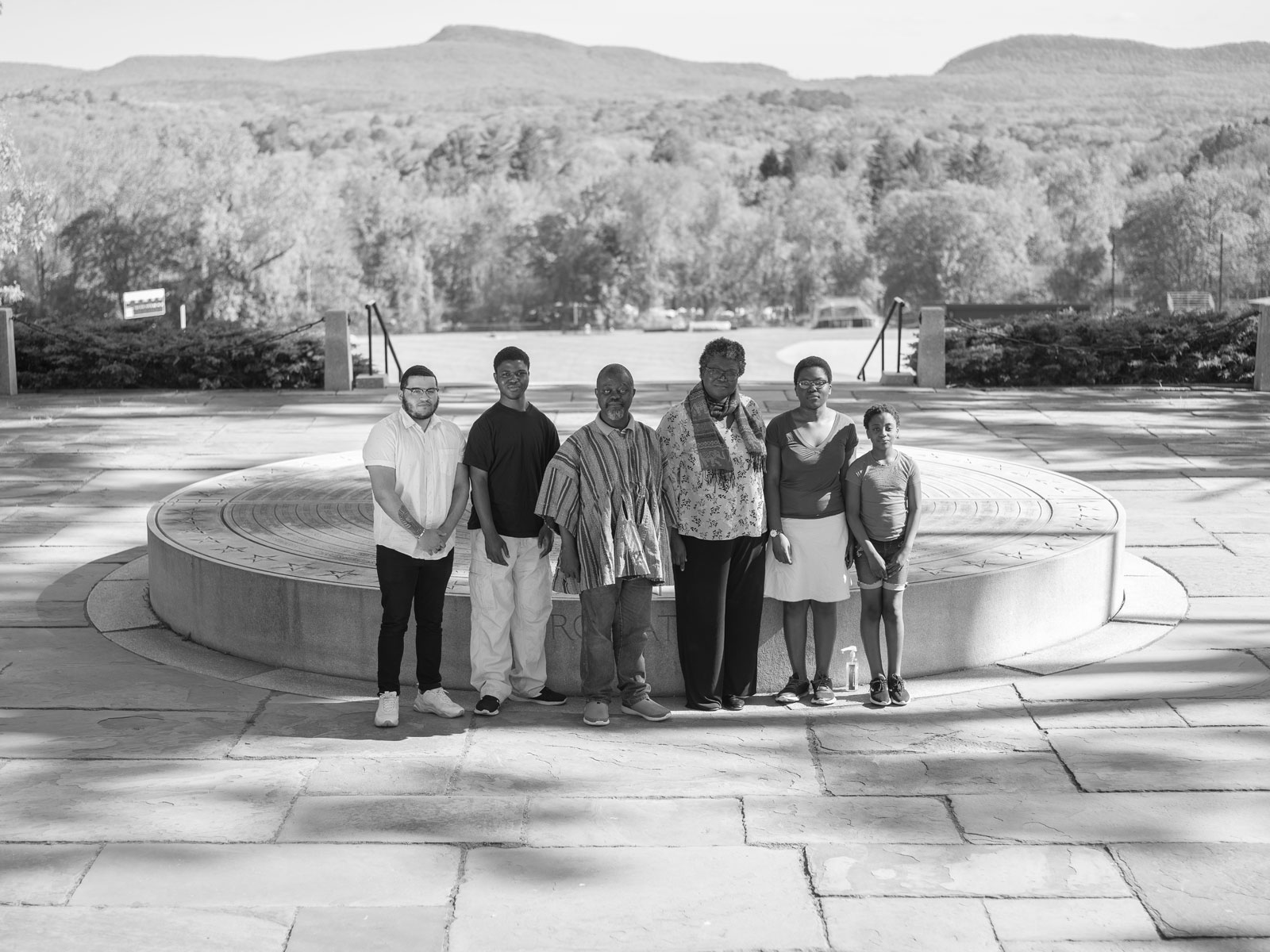
“My robes are brought by my brother from Ghana, my home country," Richmond Ampiah-Bonney, academic manager of the chemistry department, told photographer George Qiao. Ampiah-Bonney put on a new robe before bringing his family to Memorial Hill for this photoshoot. Photograph by George Qiao
This story begins in Row 39.
That’s where George Qiao was sitting, one sunlit morning seven years ago, as Asiana Airlines Flight 214, from Seoul to San Francisco, began its landing descent. These days, Qiao is an assistant professor of history and Asian languages and civilizations. He’s also the photographer behind the project “Memorial Hill 2020: Portraits of a College Community in Global Pandemic.”
On July 6, 2013, though, he was flying back to Stanford University, where he was getting his Ph.D. Qiao had just finished his archival research, in Taiwan and mainland China, for his dissertation on Shanxi merchants and banks in the Qing Dynasty.
As the plane inclined over San Francisco Bay, it struck the seawall bracing the outer edge of the runway. The landing gear slammed into the wall, then the tail. The left engine fell off. So did the rudder and tail. The Boeing 777 swept into a near 360-degree spin. Black smoke billowed from the fuselage. There were 307 people on the plane. More than half were injured (187, with 49 of them seriously). Three died.
Those who died had been in rows 41 and 42.*
Qiao was physically uninjured. “I was really lucky,” he says. But the emotional fallout, the proximity to death a few rows back, was overpowering. For months, he was at a loss: “There was a period of time when I really couldn’t get back to my research, my writing.”
During COVID, some of us have calmed our worried minds by using our hands, painting or gardening or baking or sewing. In grad school, Qiao had taken some photography classes, and that’s where he found solace after the crash. “I couldn’t do things, but I could sort of play with cameras,” he says. Yet this is a scholar, born in Shengze, China, who specializes in Chinese history: At some point, he’d have to fly again, for work or to visit his family back home. To help ease his anxiety at being airborne, his therapist tried exposure therapy. The first step was to go back to San Francisco International Airport.
“For me, the way to do that was to bring a camera, to take photographs of the airport,” explains Qiao. “Because photography gives me excitement, and I could use that excitement as something to counterbalance that fear, that sense of terror.”
Which brings us to April 2020, in another time of fear and terror. Qiao is again using a camera to cope, but now he’s trying to photograph his energetic 2-year-old son, Max, as they walk around the eerily empty Amherst campus. When they go to the War Memorial, Qiao realizes that this is where he wants to document members of the Amherst College community during COVID-19.
“I’m a historian and a photographer, so that’s my starting point,” he says. “One of the historian’s jobs is to document the things that are important, that are happening around us. I wanted these photographs to be a medium of documentation, not just as an art form.”
Because people are isolating now, he decided to pose them against the resonant background of the Holyoke Range, “to create a sense of that distance and longing and isolation.” But he realized the War Memorial itself was a metaphor, too: “A time of virus is like a period of war. During the first and second world wars, our campus life was interrupted. So this is the third time in the 200 years of our history that we have a major disruption to campus life. These different layers of history, along with the magical landscape in the background, not only create a sense of individual-versus-larger-forces but also show individuals in a moment in history.”
For these last months, Qiao and his assistant Haoran Tong ’23, a student from Beijing who has remained on campus, put out word about the project, hoping students, faculty, staff, local alumni and their families might participate. Interest has overflowed their expectations: Qiao has now photographed 290 members of the campus community and will continue indefinitely.
Most shoots take place on weekday afternoons. Look at the portfolio, chronologically, and you can see the bare trees and then, later in the spring, the hills are in bloom and people include signs that speak to the protests over racial injustice. The photos evolve as history evolves.
Qiao usually chooses two poses: a close-up of the subject wearing a facial covering, which he shoots with a telephoto lens, a more distant shot of people with or without their masks.
Do masks impede expression? Actually, they channel feelings to the eyes, he’s noticed. “Eyes tell the story better when the mouth is shut,” says Qiao. “There were all these sorts of emotions. People are fearful and they feel uncertain about the future. They are angry. I can relate to that, from the experience I had with the trauma in the aftermath of the plane crash.”
What follows are 14 photos taken by a man whose healing process has, in some ways, extended to many others. Because of the Memorial Hill 2020 project, history will see how Amherst College endured in the era of the coronavirus, this tragic and rudderless time.
*Correction: An earlier version of story included incomplete information on the rows in which the three people were seated. It has been updated to include the correct rows.
Photographs and Captions by George Qiao
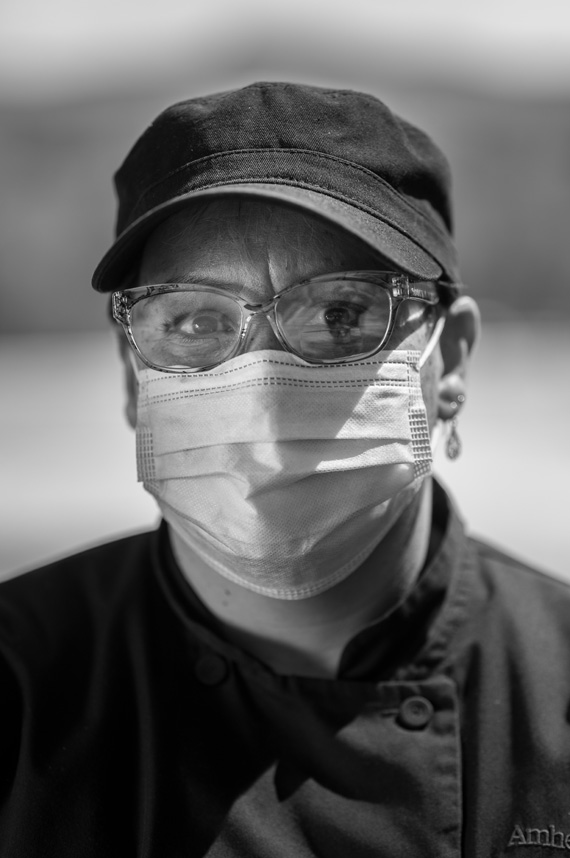
Maria Ortiz is a cook in Dining Services. “I have to rush back to Val after this shot,” she told us. “Barbeque chicken is sizzling.”
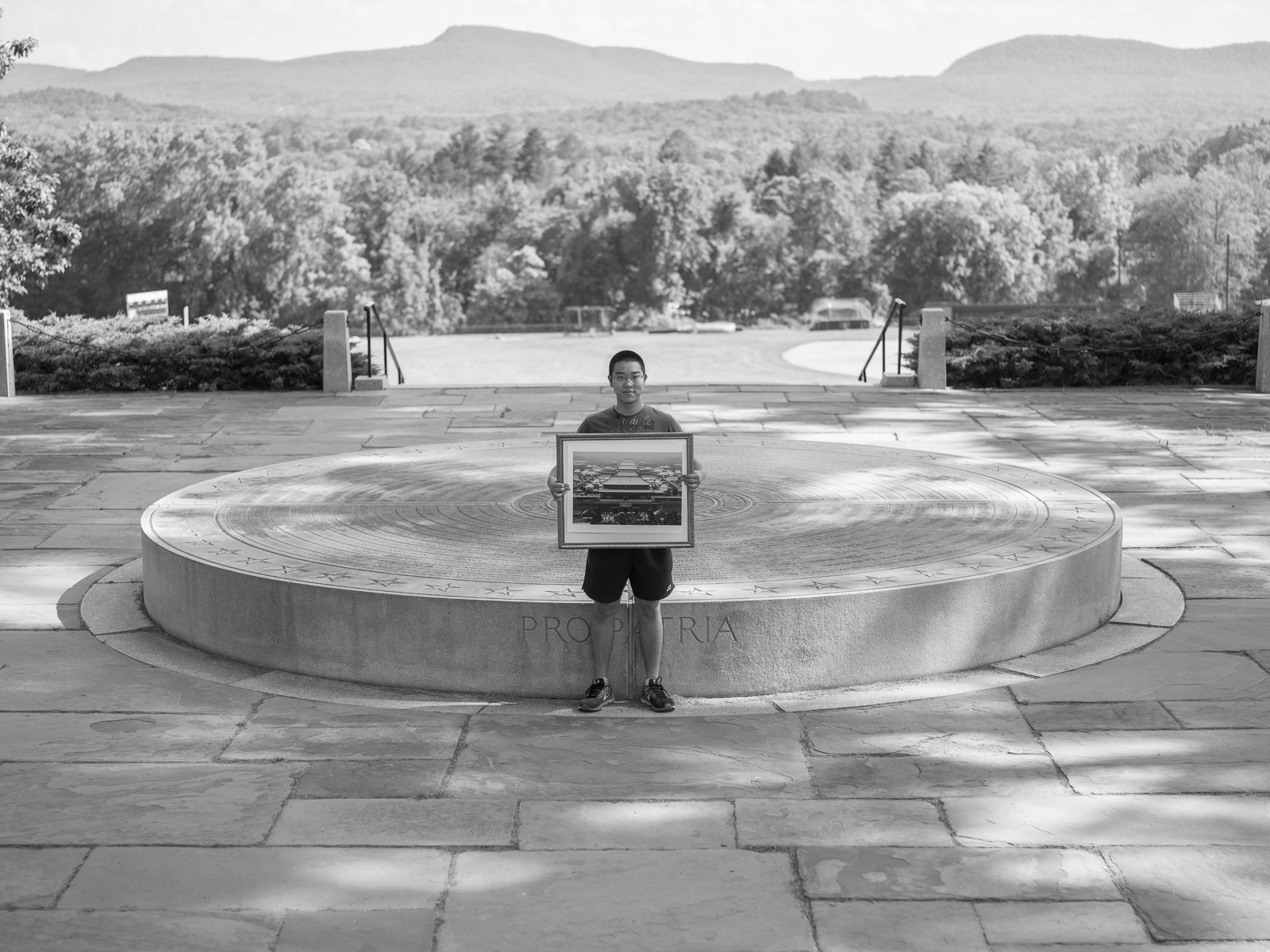
Haoran Tong ’23 holds a photograph of the Forbidden City he took in the winter of 2019 back in Beijing, China, his home city.
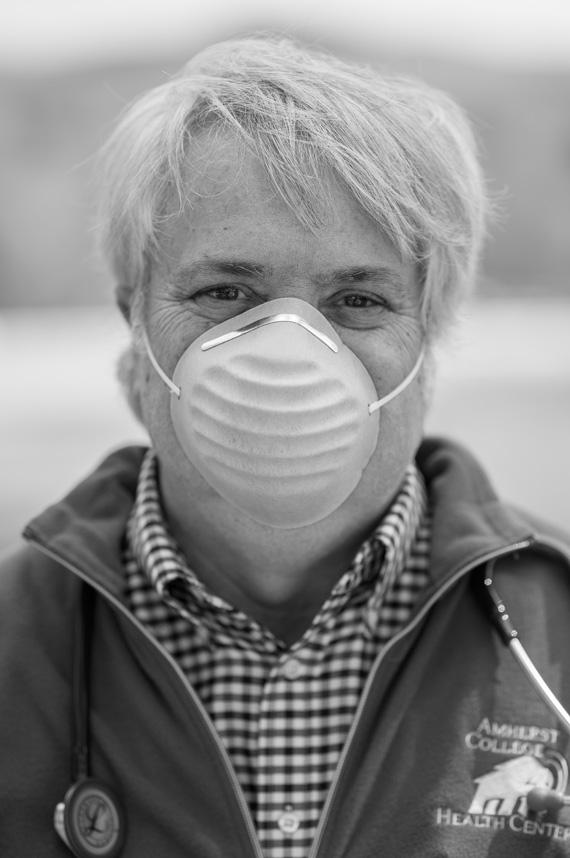
“Is my mask good enough? For saving lives, yes, but for art?” asked Edward McGlynn, physician assistant in Health Services.
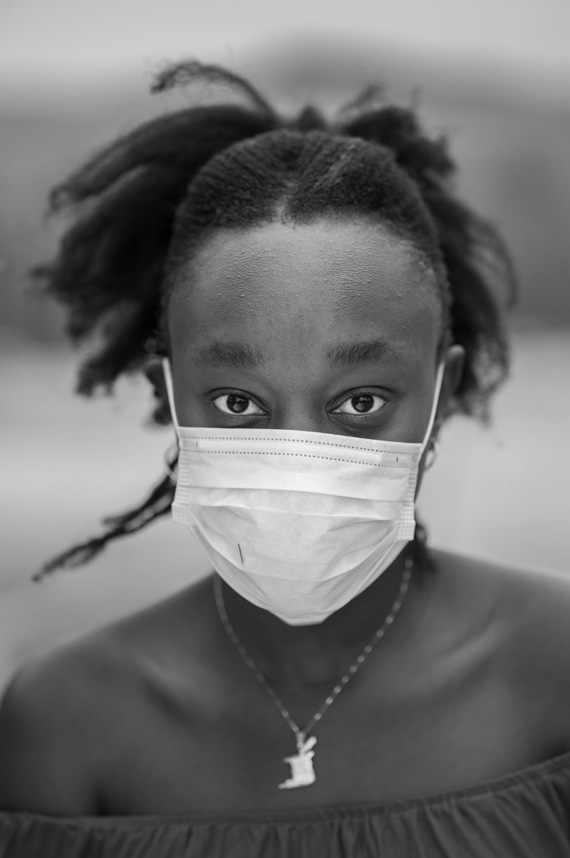
“I can't help but wonder what could have been,” said Maya Roberts ’23. We photographed her only a few minutes before a storm hit.
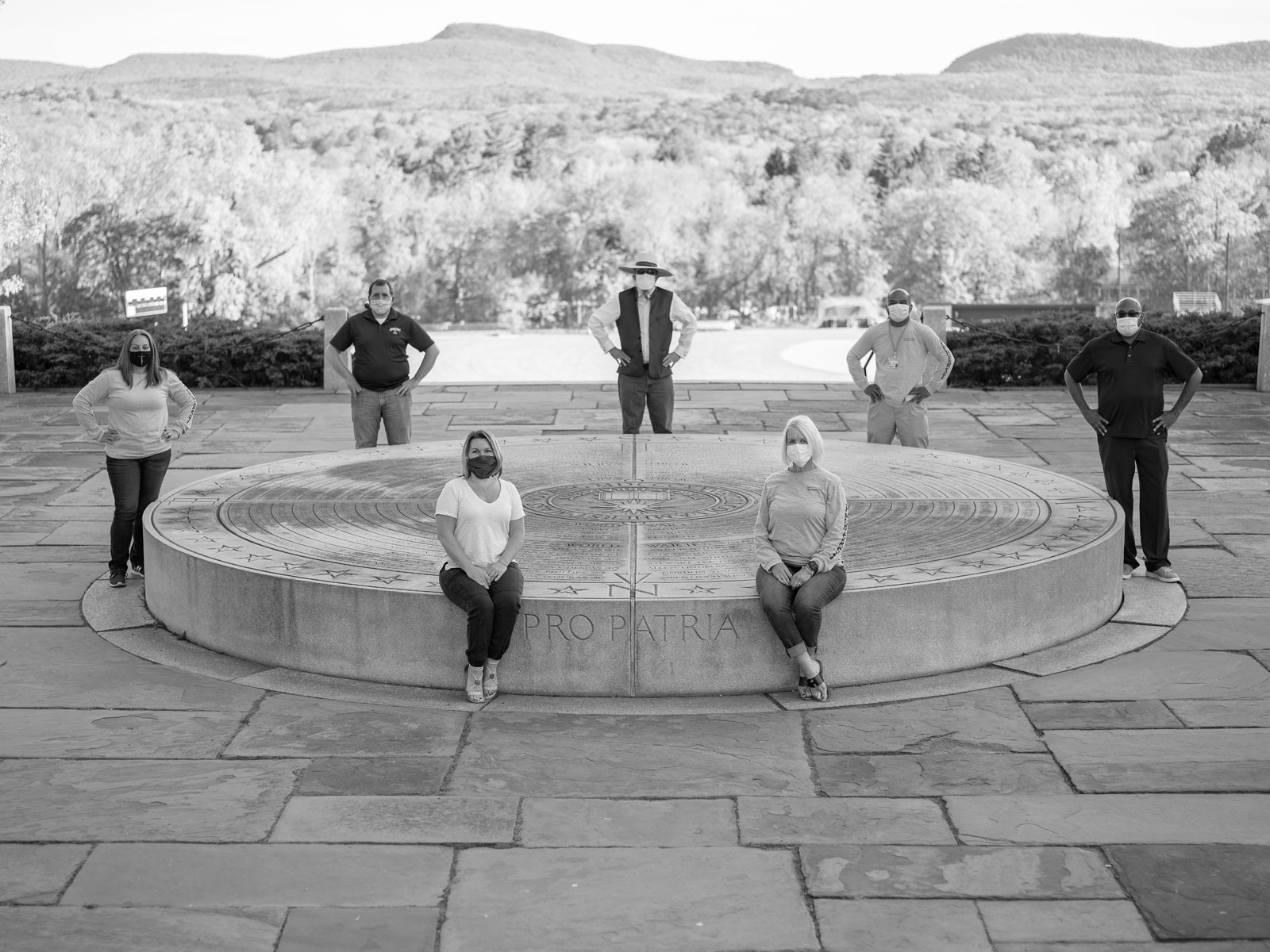
Thirteen staff members from Shared Services showed up simultaneously for the photo shoot. It was their first time back to the College after the lockdown began. “I miss the basic things that we took for granted,” said Kris Rose, far left. Pictured clockwise from left are Rose, Scott Kinney, Philip-Chapman-Bell, Heap Sin, Ralph Johnson, Megan Motyka and Debbie Edwards.
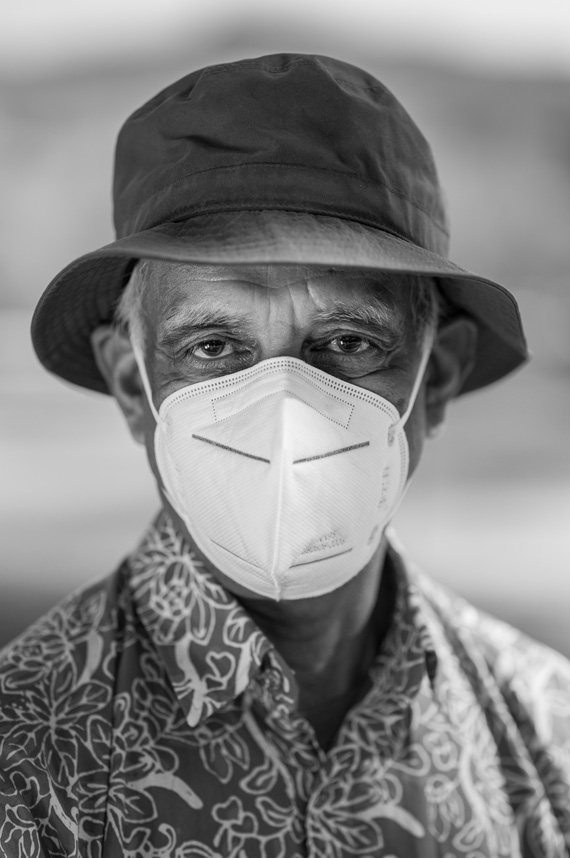
“I felt an uneasy sense of calm before a storm whose nature and intensity is unknown," Jagu Jagannathan, the Bruce B. Benson ’43 and Lucy Wilson Benson Professor of Physics, told us.
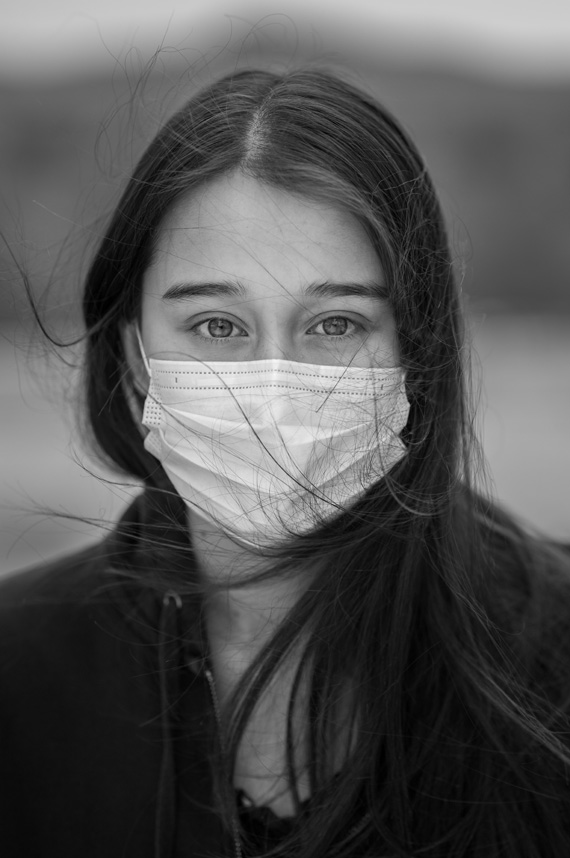
The wind and Kalea Ramsey ’23’s eyes made the picture. Her portrait helped us decide on the direction of the project.
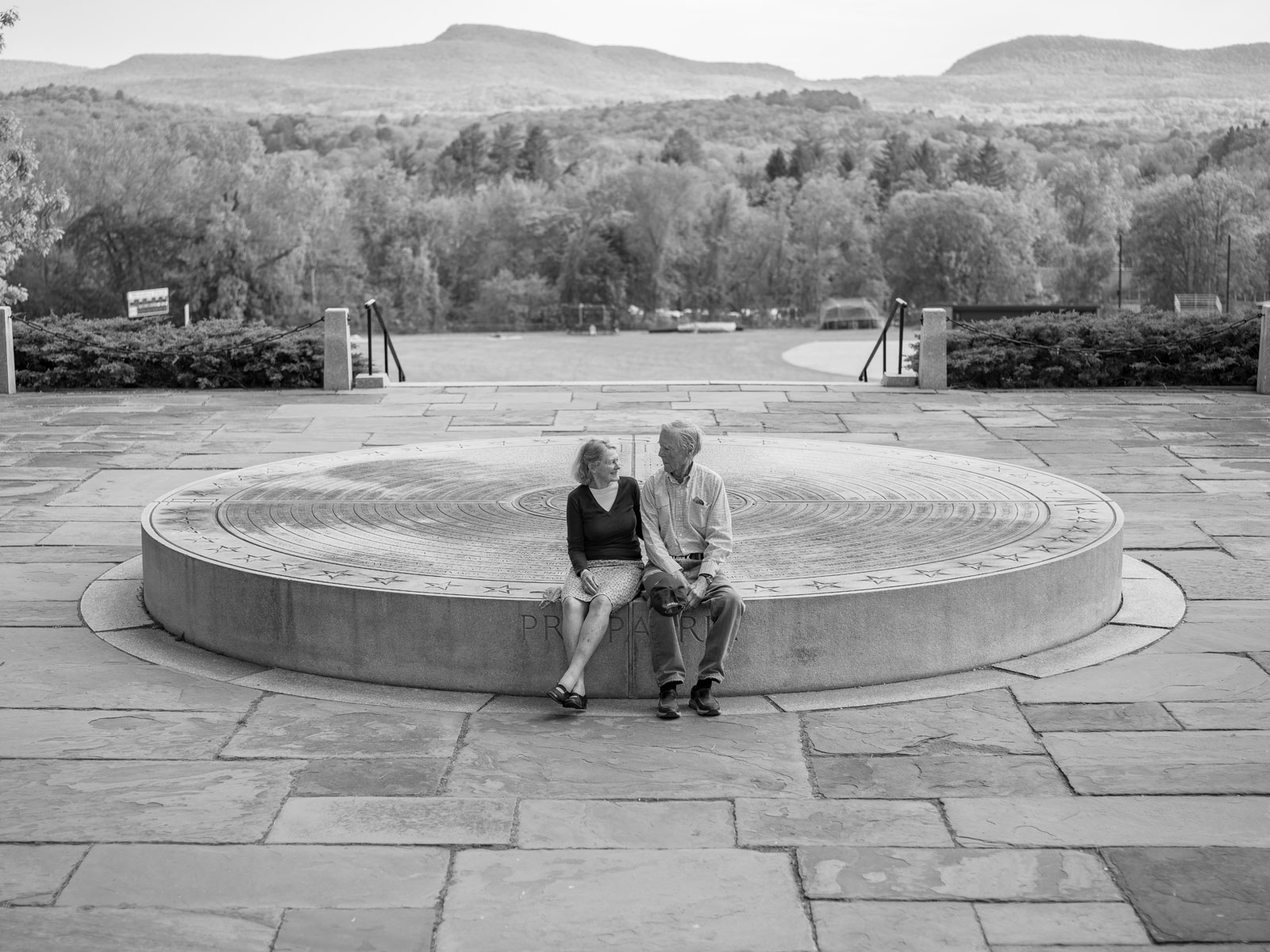
Local residents Charles '51 and Polly Longsworth. “There are tears in my eyes (when I saw these photos),” Polly wrote in an email. “You have caught the relationship of a long and loving marriage...”
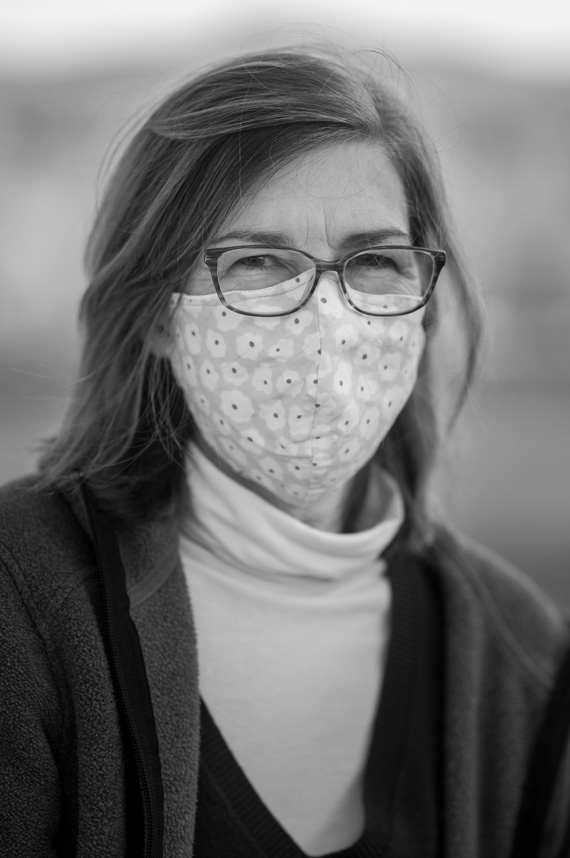
“My life was disturbed on a fundamental level,” Nicola Courtright, the William McCall Vickery 1957 Professor of the History of Art, told us. Her eyeglass got broken on her way to the photo shoot, and thus we got the portrait of her with only one leg on the glass.
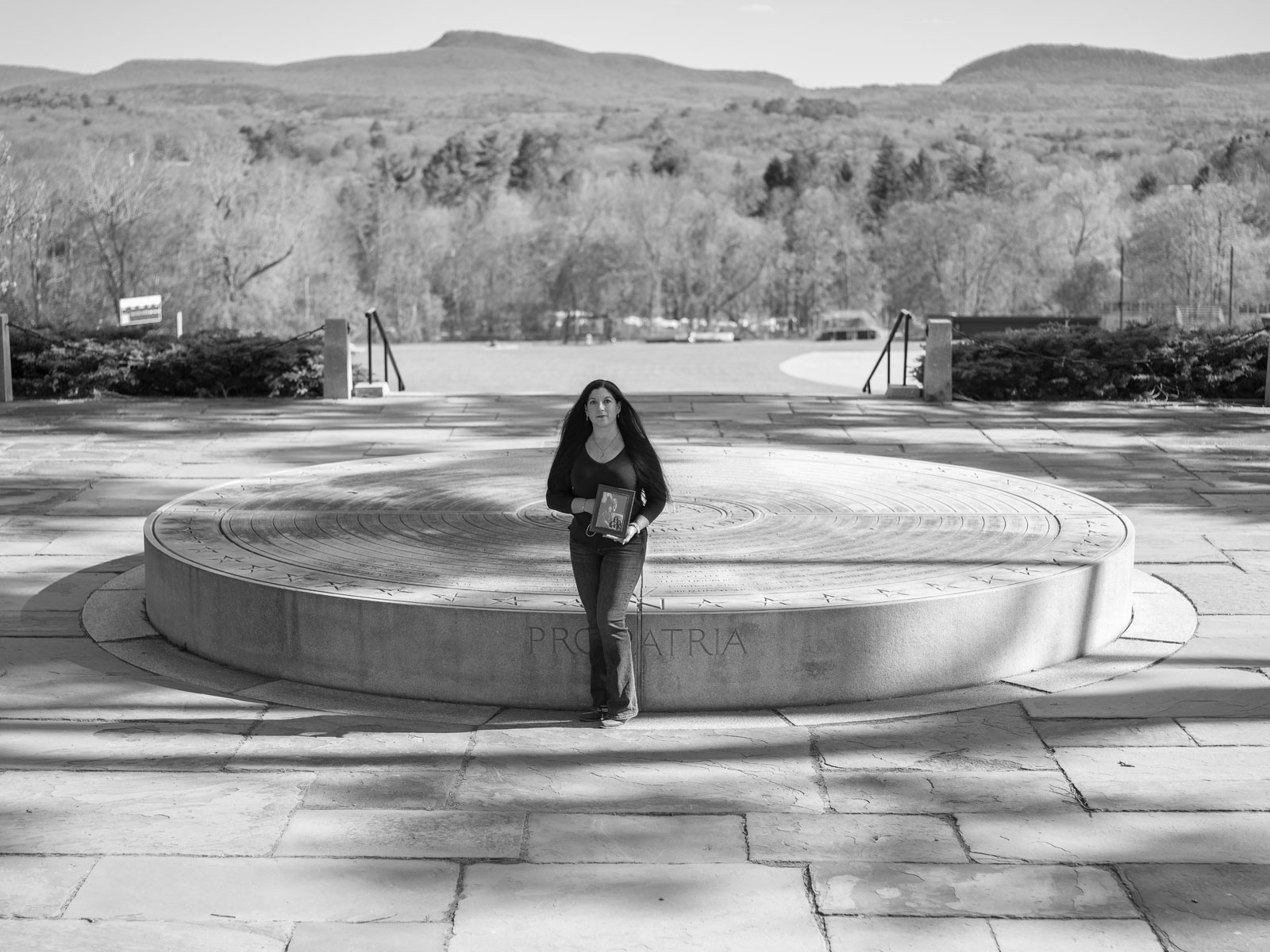
“I want to hug my family,” Carolyn Margolin, a program director at the Loeb Center for Career Advancement and Planning, told us. That is why she brought pictures of her family for the photoshoot.
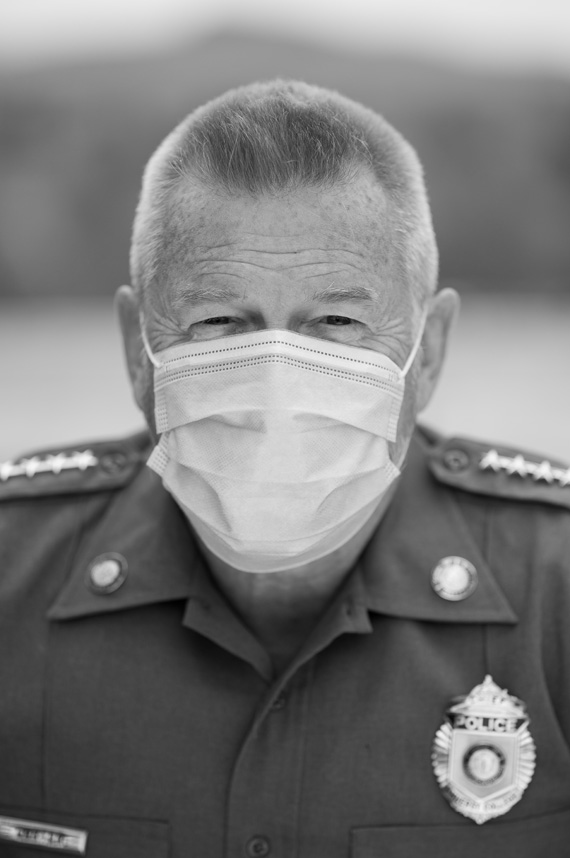
John Carter, chief of police and director of public safety. With great responsibility on his shoulders as the police chief, he fears about the loss of his loved ones. A close friend of his just passed away from COVID-19 complications.
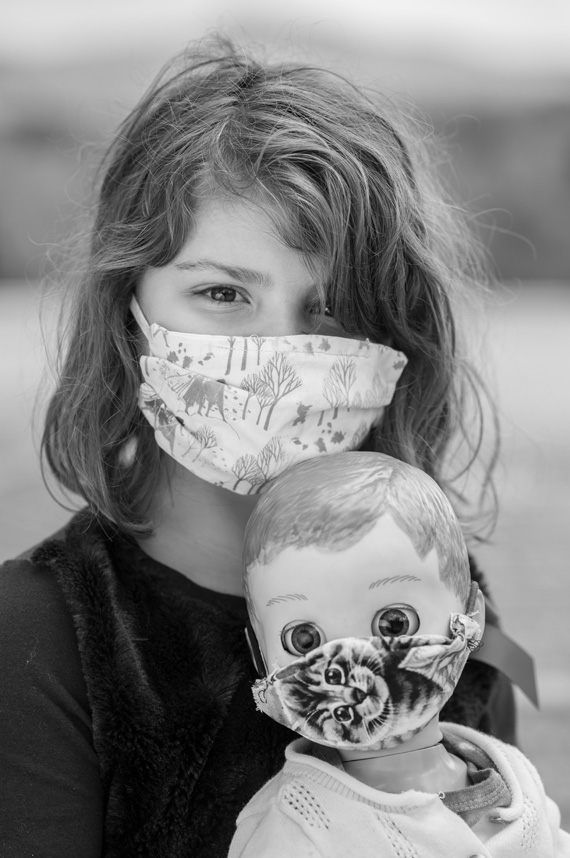
Avelynn Augustin, daughter of Eddy Augustin, an Amherst football coach. Three pairs of telling eyes spark the frame as Avelynn puts a cat-face mask on her cherished doll, Love Abella.
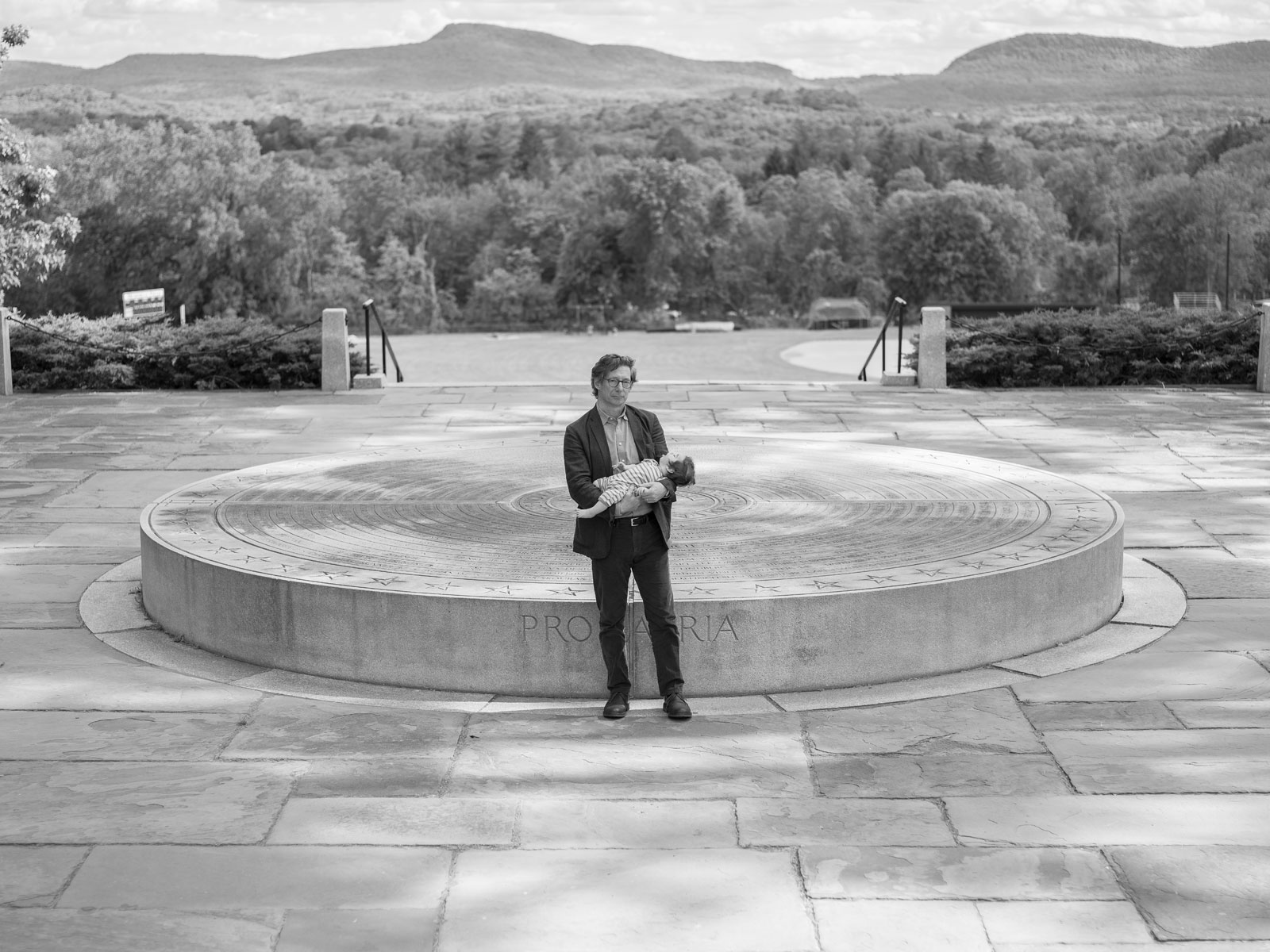
Alexander George, the Rachel and Michael Deutch Professor of Philosophy, with his son, Felix Mai-George. Felix is our youngest participant, only 4 months old. He did not cry during the photoshoot.
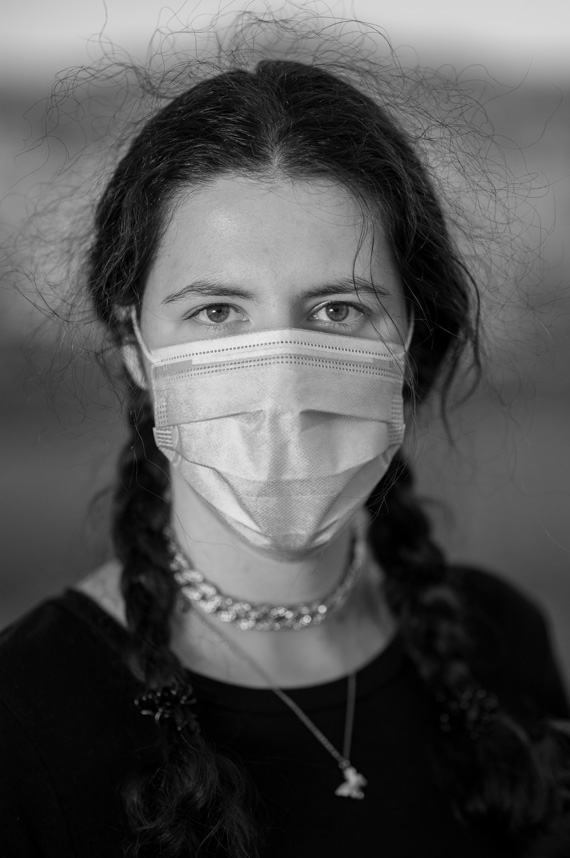
“The pandemic taught me to take things more lightly, reevaluate my priorities and force myself to stay hopeful,” Lidia Gutu ’20 told us.